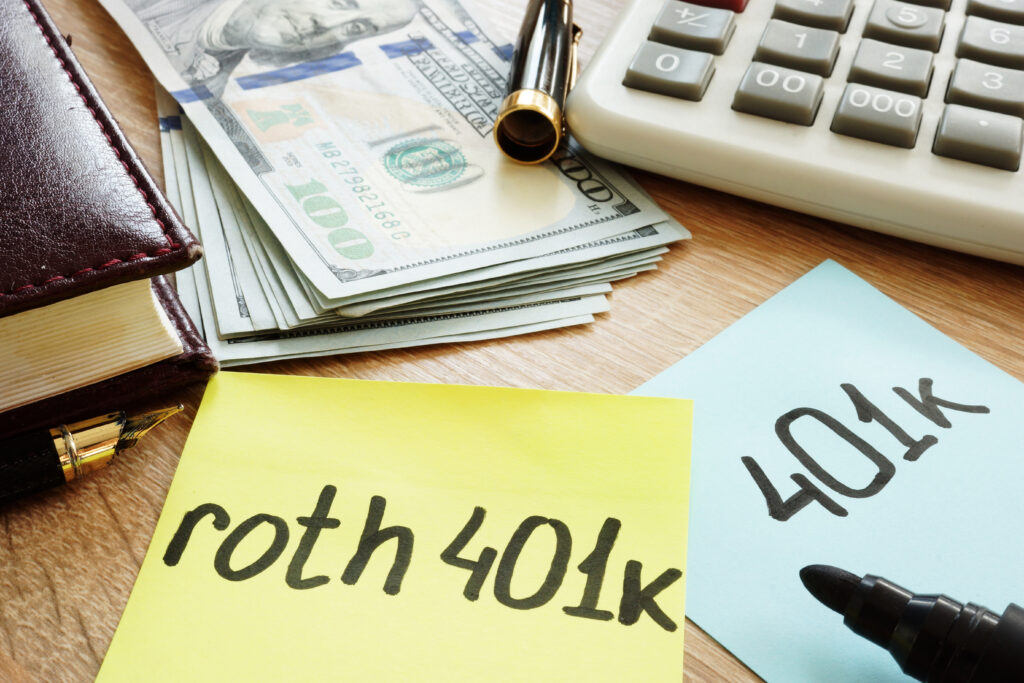Presented by: David Lawrence
Read Time: 4 MIN
The After-Tax Mega Backdoor Roth 401(k) is a strategy that allows high-income earners to contribute more to their retirement accounts while also taking advantage of the benefits of a Roth IRA. If you’re looking for a way to supercharge your retirement savings, the Mega Backdoor Roth 401(k) might be just what you need.
First, let’s break down what the Mega Backdoor Roth 401(k) actually is. A traditional 401(k) plan allows employees to make pre-tax contributions up to a certain limit, currently $19,500 in tax year 2022. However, there is a higher limit for total contributions, including employee and employer contributions. For tax year 2022, this limit is $61,000, or $64,500, if you’re over 50 and eligible for catch-up contributions.
The Mega Backdoor Roth 401(k) strategy takes advantage of this higher total contribution limit. It involves making after-tax contributions to your 401(k) plan above and beyond the regular pre-tax contributions up to the total contribution limit. Once you’ve made these after-tax contributions, you can convert them to a Roth IRA, allowing your savings to grow tax-free.
The main advantage of the Mega Backdoor Roth 401(k) strategy is that it allows high-income earners to make significant Roth IRA contributions, even if they’re not eligible to make direct Roth IRA contributions due to income limits. For 2022, the income limit for direct Roth IRA contributions is $140,000 for single filers and $208,000 for married filing jointly. However, there are no income limits on Roth IRA conversions, which is what the Mega Backdoor Roth 401(k) strategy relies on.
It’s important to note that not all 401(k) plans allow for after-tax contributions, and even if they do, they may not allow for in-service withdrawals or conversions to a Roth IRA. You’ll need to check with your employer to see if the Mega Backdoor Roth 401(k) strategy is available to you.
Another consideration is that the after-tax contributions you make to your 401(k) plan will not be tax-deductible, so you’ll need to weigh the tax benefits of pre-tax contributions against the long-term benefits of tax-free growth in a Roth IRA. Additionally, if you plan to retire soon, you may not have enough time for the after-tax contributions to grow and compound in your Roth IRA, so this strategy may not be the best fit for everyone.
In summary, the After-Tax Mega Backdoor Roth 401(k) strategy is a powerful tool for high-income earners who want to maximize their retirement savings and take advantage of the tax-free growth potential of a Roth IRA. If you’re considering this strategy, check with your employer to see if it’s available, and consult with a financial advisor to make sure it’s the right fit for your circumstances.
LIVE WITH CONFIDENCE!
David Lawrence, Private Wealth Advisor may be reached at 810.229.6446 or dlawrence@ewmadvisors.com
EWM does not offer tax or legal advice.Executive Wealth Management (EWM) is a Registered Investment Advisor with the Securities and Exchange Commission. Reference to registration does not imply any specific level of qualification or skill. Investment Advisor Representatives of EWM offer Investment Advice and Financial Planning Services to customers located within the United States. EWM does not offer tax or legal advice. Executive Wealth Management, EWM Tax Solutions, and EWM Legal Services are affiliated but separate companies.

